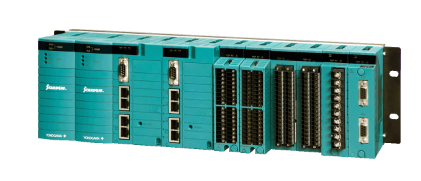ABB NAIO-03 is an integrated circuit. In electrical control systems, integrated circuits play a crucial role, especially in timing and counting control. However, when the traditional electrical control system uses the delay action of time relay to control the time, its delay time is easy to be affected by the ambient temperature and temperature change, resulting in low timing accuracy.
ABB NAIO-03 Integrated Module
Product Overview
ABB NAIO-03 is an industrial grade analog/digital I/O expansion module, belonging to ABB Ability ™ The core function of the I/O module series for control systems such as System 800xA is to expand the signal acquisition and output capabilities of the controller, achieving precise conversion, transmission, and control of industrial field analog signals (such as temperature and pressure) and digital signals. This module adopts modular design and can be seamlessly integrated into PLC/DCS systems, widely adapted to multiple scenarios such as automated production lines, energy management, chemical monitoring, etc., providing signal processing support for the fine control of industrial processes.
Core specification parameters
Signal channel
Analog input (AI): 8 channels; Analog output (AO): 4 channels; Some sub models have 32 digital inputs
AI supports voltage (± 10V, 0-10V)/current (4-20mA, 0-20mA) signals; AO output type configurable
Accuracy performance
Resolution: 12 bits (some high-end versions have 16 bits); Sampling rate: 1kHz
Sampling delay<10ms, meeting real-time process control requirements
communication interface
Supports Modbus RTU, Profibus, CANopen; Some versions include Ethernet interfaces
Communicate with the controller through the system bus, with a maximum communication speed of 1Mbps
Electrical Characteristics
Working voltage: 24V DC (powered by the system bus); Power consumption: maximum 25W
Electrical isolation between input channels, anti surge voltage ± 2kV, with overvoltage and overcurrent protection
environmental adaptation
Working temperature: -20 ° C~+60 ° C (wide temperature version -40 ° C~+125 ° C); Protection level: IP20
Suitable for 0%~95% non condensing humidity, suitable for installation in control cabinets, and resistant to industrial dust and vibration environments
Physical specifications
Dimensions: 120mm x 80mm x 25mm (standard)/125mm x 70mm x 25mm (digital version); Weight: 0.2~0.5kg
Supports DIN rail installation and uses detachable terminal blocks for easy wiring and maintenance

Performance characteristics
1. High precision signal processing capability
12 bit (or 16 bit) resolution ensures signal acquisition error<0.1%, suitable for high-precision measurement scenarios such as temperature and pressure;
Support custom configuration of signal range (such as switching between 4-20mA and 0-10V), compatible with different types of sensors and actuators.
2. Industrial grade reliability design
Electrical isolation and high-level EMC protection between channels can resist electromagnetic interference in industrial sites and reduce the risk of signal distortion;
Equipped with triple protection against overvoltage, overcurrent, and short circuit, the module's front-end LED indicator lights display real-time power, communication, and channel status, making it easy to quickly locate faults.
3. Flexible scalability and compatibility
Modular architecture supports seamless integration with control systems such as ABB SC300E and System 800xA, allowing for on-demand expansion of I/O points;
Compatible with mainstream industrial communication protocols, enabling cross vendor device data exchange (such as connecting third-party PLCs and frequency converters).
Working principle
NAIO-03 achieves industrial signal processing through four steps of "signal acquisition conversion transmission control":
Signal access: The analog input channel is connected to temperature, pressure, and other sensors to receive analog signals such as 4-20mA/0-10V; The digital version is directly connected to the switch signal;
A/D conversion: Built in high-precision analog-to-digital converter (ADC) converts analog signals into 12 bit/16 bit digital signals, and reduces noise interference through filtering algorithms during the conversion process;
Data transmission: Digital signals are transmitted to the main controller through protocols such as Modbus/Profibus, while receiving control instructions issued by the controller;
Signal output: Control instructions are converted into analog signals through a digital to analog converter (DAC) to drive actuators such as valves and pumps, achieving closed-loop control.

Precautions for use
Installation specifications
It must be installed inside the control cabinet (IP20 protection is only applicable to indoor dry environments), away from strong electromagnetic interference sources (such as frequency converters);
Before wiring, the system power should be cut off and securely connected using M12 connectors or terminal blocks to avoid signal loss caused by virtual connections.
Operation taboos
Not supporting hot swapping: When replacing or maintaining modules, power must be turned off first. Forcefully hot swapping may burn out internal circuits;
Prohibited from using beyond the range: The input signal must not exceed ± 10V or 20mA, otherwise the protection mechanism will be triggered, causing the module to shut down.
Maintenance points
Regularly calibrate signal accuracy through controller software (recommended once every quarter) to avoid drift caused by long-term use;
If the red indicator light is constantly on, it is necessary to use ABB's specialized diagnostic tool to troubleshoot communication links or hardware faults, and it is prohibited to disassemble the module by oneself.
Compliance requirements
It needs to be used in conjunction with ABB certified main controllers, as non certified devices may result in incompatible communication protocols;
Installation and commissioning must be carried out by personnel with ABB equipment operation qualifications to ensure compliance with IEC 61131-2 standards.
Collaborative relationship with MSR04XI
NAIO-03 (signal processing) is often used in conjunction with MSR04XI (serial communication): NAIO-03 is responsible for front-end signal acquisition and output, while MSR04XI transmits signals to remote control systems through a serial interface, forming a complete link of "signal processing remote communication", suitable for cross regional equipment control scenarios in large factories.

- User name Member Level Quantity Specification Purchase Date
- Satisfaction :
-









Email:wang@kongjiangauto.com




































































































































